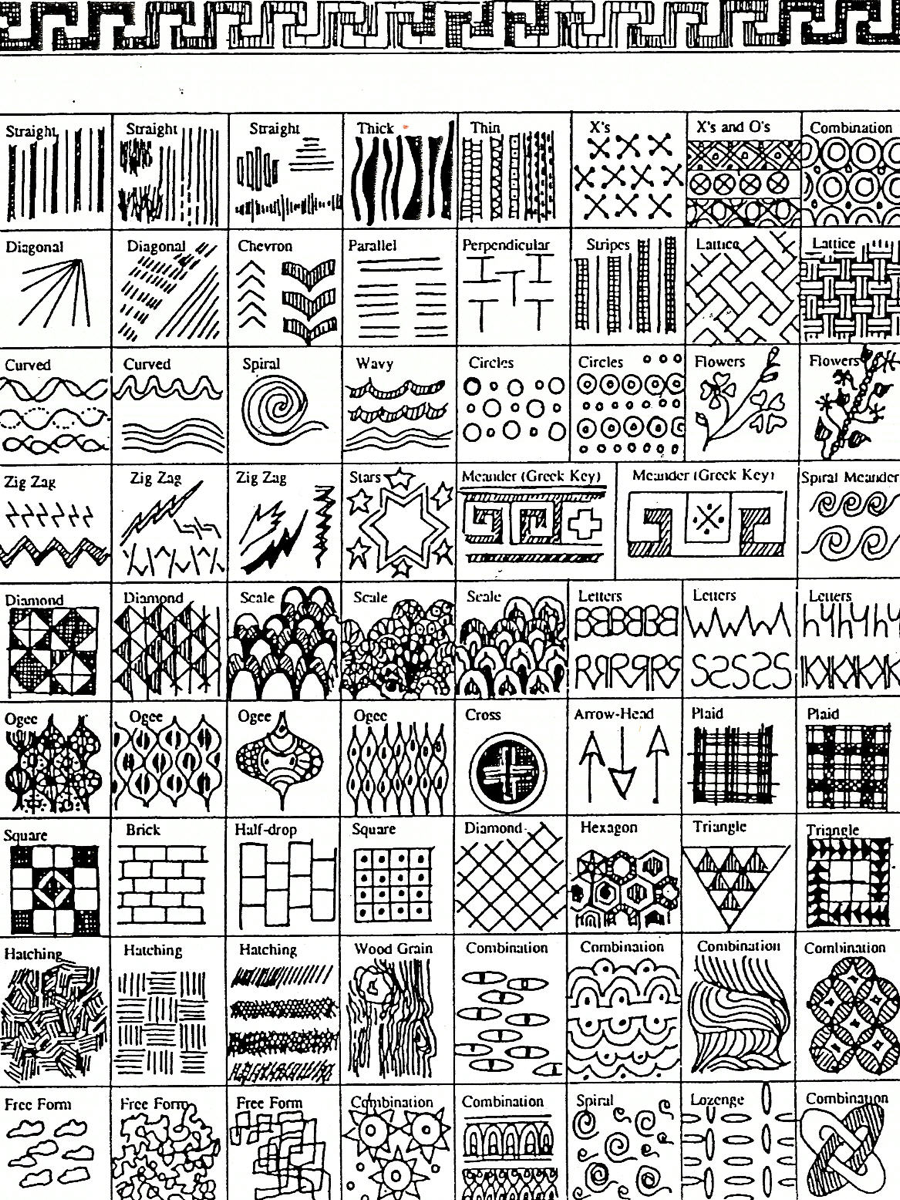After drawing colorful patterns onto papers and roling them into cylinders, students create Japanese-Inspired fish kites. Recommended for 1st Graders.
Pattern/Repetition/Variation: Artists often use repeated items or patterns in order to make an interesting design for many different effects. Pattern and repetition also help create a unified composition and stability in the picture. Variation of the pattern adds interest to the work of art.
Pattern: a principle of design; the repetition of the elements of visual arts in an organized way; pattern and rhythm are both created through repetition; see rhythm for examples of regular, alternating, random, and progressive rhythmic patterns.
Repetition: the repeated use of particular elements of visual arts to create a pattern, movement, rhythm, or unity.
Variety/Variation: the use of the elements of visual arts to create differences in an artwork for visual interest.
Line: a mark on a surface. Lines can be created by a pen, pencil, brush, stick etc., on a variety of surfaces. Line is an element of art.
Form: an element of visual arts; a three-dimensional object that has height, length, width, and depth.
Ando Hiroshige (pronounced Hear-oh-shee-ghee)was a Japanese artist who lived from 1797-1858 and produced more than 8000 works of art. He was known for his landscape works in printmaking and painting in the style of art called ukiyo-e. The best example of his artwork to use with this lesson is The Suido Bridge and Surugadai (a woodblock print from 100 Views of Edo, pictured below).
Some students are comfortable drawing patterns with the oil pastels without needing to sketch them in pencil first.
Samples of lines and patterns can be passed out or demonstrated to the students.
Discuss the Japanese Holiday of Children’s Day (formerly called Boy’s Day). In Japan, this holiday is celebrated by hanging paper kites resembling fish called “carp” outside children’s homes. For this lesson, these kites are meant for decoration only (they are not really sturdy enough to hang outside).
Students will state that a pattern is a series of repeated line, shape, color, texture.
Students will take a flat piece of paper and roll it to demonstrate a cylinder form.
Students have created individual design choices of patterns and colors while having areas of vivid color.




Optional - kites can be hung from a bamboo rod or a tree branch for display.


Printable PDF of Lines, Patterns, Variation, and Repetition examples.
The Suido Bridge and Surugadai by Ando Hiroshige.
http://education.asianart.org/explore-resources/background-information/artist-profile-utagawa-ando-hiroshige-1797–1858
http://www.cfisd.net/en/parents-students/academics/course-descriptions/elementary-art/glossary-art-terms-k-5/
http://www.incredibleart.org/files/elem_vocab.html
http://arthistoryresources.net/ARTHLinks.html
http://arthistory.about.com/
21st Century Thinking Skills
Goal setting, observing, making connections, visualizing, sequencing, comparing/contrasting, problem solving, cause and effect, decision making, analyzing, evaluating.
Habits of Mind
Thinking flexibly, persisting, creating, innovating, taking responsible risks, reflecting.
WA State Learning Standards
(VA:Cr1.2.1) a. Use observation and investigation in preparation for making a work of art.
(VA:Cr2.1.1) a. Explore uses of materials and tools to create works of art or design.
(VA:Cr2.2.1) a. Demonstrate safe and proper procedures for using materials, tools, and equipment while making art.
(VA:Cr3.1.1) a. Use art vocabulary to describe choices while creating art.
(VA:Pr5.1.1) a. Ask and answer questions such as where, when, why, and how artwork should be prepared for presentation or preservation.
(VA:Cn11.1.1) a. Understand that people from different places and times have made art for a variety of reasons.
Art Integration Opportunities
Cultural Arts of Japan.
Geometry.
Please note: These lesson plans are intended for non-profit use only. Use of these plans for commercial purposes should give attribution to the Issaquah Schools Foundation and be accompanied by a nominal donation at www.isfdn.org/donate. Thank you.
Fueling Success for Every Student, Every School